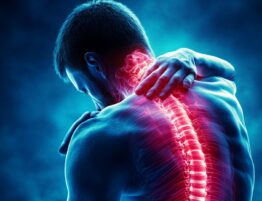Amputation is a significant trauma for the body. Many patients experience a remarkable phenomenon following amputation. It is called phantom limb syndrome. This syndrome occurs in 90% of people after surgery. This condition is perplexing and distressing for many amputees. The sensations feel vividly real despite the limb no longer being present. It affects a significant number of individuals who experience limb loss.
The brain is central to this condition as it continues to send signals to the nerves that initially controlled the missing limb. The sensory cortex maps the body’s parts and their functions. It may still retain a representation of the absent limb. This leads to phantom limb syndrome (PLS) sensations. The brain attempts to adapt to the loss by reorganizing neural pathways. This neural reorganization can result in unexpected sensations.
The Neuroscience Behind Phantom Limb Syndrome
PLS occurs when individuals experience sensations in a limb that no longer exists. Neuroscience is concerned with how the brain processes sensory and motor information. The experience of PLS sensations is primarily rooted in its sensory and motor areas. They remain active even after limb loss. These regions primarily include the sensory and motor cortex. They map out the body parts and their functions. These areas create a neural map of the entire body.
How is PLS typically related to brain activity? Let’s explore:
- Sensory Cortex Mapping: This part retains a map of the body. Neurons that once corresponded to the missing limb may continue to fire after amputation. This continuing neural activity leads to sensations of itching, tingling, or pain.
- Neural Plasticity and Adaptation: The brain undergoes a process that allows it to reorganize itself in response to changes. This adaptation can sometimes lead to the persistence of phantom limb sensations. This occurs as neural networks attempt to adjust to the limb’s absence.
- Motor Cortex Involvement: This area handles controlling voluntary muscle movements. It may also continue to send signals to the missing limb’s neural pathways. They contribute to the sensation of movement or positioning in the absent limb.
- Sensory Networks Reorganization: Following limb loss, neighboring areas may “invade” the region once devoted to the lost limb, causing cross-wiring that results in false sensations.
Neuroscience demonstrates how the brain adapts to the absence of a limb. Through this adaptation, the brain continues to perceive sensations from the absent limb.
How the Brain Adapts to Limb Loss and Phantom Sensations
The adjustment process involves the brain’s remarkable ability to reorganize itself. This reorganization occurs through neuroplasticity. The sensory and motor areas of the brain that once controlled and received input from the limb continue to function after amputation. This occurs as the brain changes to compensate for the loss. This adaptation leads to the development of PLS. As a result, sensations are still perceived as coming from the missing limb.
Here’s how the brain adaptation process works:
- Reorganization of Sensory Areas: This part, which handles processing touch and pain signals, begins to reorganize itself. Neighboring areas may start to take over the region once dedicated to the lost limb. It can trigger false sensations in the area where the limb used to be.
- Motor Cortex Changes: This part may also adapt by forming new neural connections. They are no longer associated with movement in the missing limb. Yet, they still evoke pain or movement.
- Neuroplasticity and Phantom Sensations: The brain attempts to adapt. Neuroplasticity leads to the formation of new neural pathways. These connections may cause the persistence of phantom limb syndrome. In this condition, the brain continues to send and receive signals from the absent limb.
The brain’s ability to form new neural connections through neural plasticity is crucial in the adaptation to limb loss and the persistence of PLS.
The Role of Sensory Perception in Phantom Limb Syndrome
PLS is closely linked to the brain’s sensory input processes. This concerns how it interprets signals from the limb stump and surrounding nerves after amputation. These residual tissues and nerves can send mixed signals to the brain. They may be mistakenly interpreted as coming from the missing limb.
How does sensory perception play a role in PLS? Let’s explore:
- Residual Limb Signals: After amputation, sensory receptors and nearby nerves continue to send signals to the brain. These signals are perceived by the brain despite no longer originating from the missing limb. The brain interprets these signals as if they are coming from the absent limb.
- Misfiring of Nerve Signals: The brain may misinterpret these residual signals as sensations like itching, tingling, or pain in the missing limb. These sensations can feel completely real to the patient.
- Pain and Distress: Neuropathic pain can be particularly distressing for patients. Phantom limb pain is often described as sharp, burning, or cramping. This happens when the brain’s interpretation of these signals leads to painful experiences.
- Neuroplasticity and Sensory Misinterpretation: The brain adapts to limb loss. Neural reorganization can cause sensory misfiring. It intensifies discomfort or pain.
Neuropathic Pain: A Common Experience in Phantom Limb Syndrome
Neuropathic discomfort is a significant and often distressing symptom of PLS, where individuals experience pain sensations in a limb that no longer exists. This pain results from the brain and nervous system misinterpreting sensory signals. Although it is absent, the brain’s neural networks continue to process sensory information. The brain processes information as if the limb is still present, causing the sensation of pain.
How is neuropathic pain linked to PLS? Let’s explore:
- Altered Sensory Processing: The brain’s sensory pathways become restructured following amputation. This misprocessing of sensory signals can lead to the sensation of pain in the missing limb. This occurs despite the absence of actual tissue.
- Types of Neuropathic Pain: This condition can take many forms. Burning sensations are often described as a searing discomfort in limb loss. The stabbing type is sharp, sudden pain. It can feel like being stabbed in the absent limb. Some individuals face tingling or “pins and needles”. This sensation is similar to when a limb “falls asleep,” but in the absent limb.
- Brain’s Altered State: The brain’s reorganization in response to amputation results in pain. The pain is experienced as real and authentic. This happens even though no physical injury is present.
Neuropathic pain is a constant reminder of the brain’s altered processing of sensory information. It happens after amputation. Such discomfort significantly affects quality of life.
Treatments and Strategies for Managing Phantom Limb Sensations
Managing PLS can be challenging. This is due to the complex nature of how the brain processes sensations following limb loss. Various treatment approaches have been developed to alleviate discomfort and reduce neuropathic illness. These methods focus on retraining the brain to reinterpret sensory signals. They minimize the sensation of the missing limb.
Some of the most effective treatments for PLS include:
- Sensory Substitution: Transcutaneous electrical nerve stimulation (TENS) or vibration therapy stimulates the residual limb to alter the brain’s sensory processing, which decreases phantom limb sensations.
- Mirror Therapy: This method uses a mirror to create the illusion that the missing limb is still present. This approach helps the brain visualize movement. It reduces PLS pain and discomfort. It has proven effective for many patients by tricking the brain into perceiving normal limb movement.
- Cognitive-Behavioral Therapy (CBT): This approach focuses on managing the emotional consequences of pain associated with PLS and helps individuals cope with stress and anxiety typically related to phantom pain.
- Medications: Includes pain relievers, antidepressants, or anticonvulsants to manage pain. Aims to alleviate severe discomfort and reduce pain intensity.
Managing PLS requires a multi-faceted approach. It combines physical, cognitive, and sensory interventions. These therapies aim to retrain the brain and alleviate discomfort. They allow individuals to regain a sense of control over their experiences.
The Future of Phantom Limb Syndrome Research and Treatment
The future of PLS research is promising. It is driven by advancements in neuroscience and innovative treatment methods. They are typically aimed at better managing PLS pain and sensations. As scientists deepen their understanding of brain adaptation, they are uncovering more effective ways to address the underlying neural mechanisms that cause these distressing symptoms.
Here are some of the most exciting developments:
- Virtual Reality (VR) Therapy: This creates immersive environments where users can “see” and “move” their missing limb. This method encourages brain adaptation by reestablishing connections between motor intentions and sensory feedback. Studies show that VR therapy significantly reduces pain intensity while also improving mental well-being.
- Cutting-Edge Pain Management Solutions: Includes novel drugs targeting specific neural pathways. They are involved in pain perception. Genetic and molecular research aims to pinpoint biomarkers for more targeted treatments. Transcranial magnetic stimulation (TMS) is usually tested to alter brain activity. They are typically associated with phantom limb pain.
- Brain-Machine Interfaces (BMIs): This technology uses neural signals to control prosthetic limbs or virtual environments. These devices facilitate direct communication between the brain and external devices, helping patients regain a sense of limb control. BMIs reconnect the brain with functional movements. Through this process, these modern methods reduce PLS sensations.
Neuroscience continues to evolve. The potential for developing highly effective treatments grows. The integration of advanced technologies may one day lead to a future where PLS is significantly reduced or even eliminated. It offers renewed hope to those affected. For more information on PLS research and treatment options, consult with medical professionals specializing in this area.












Please, leave your review
Write a comment: